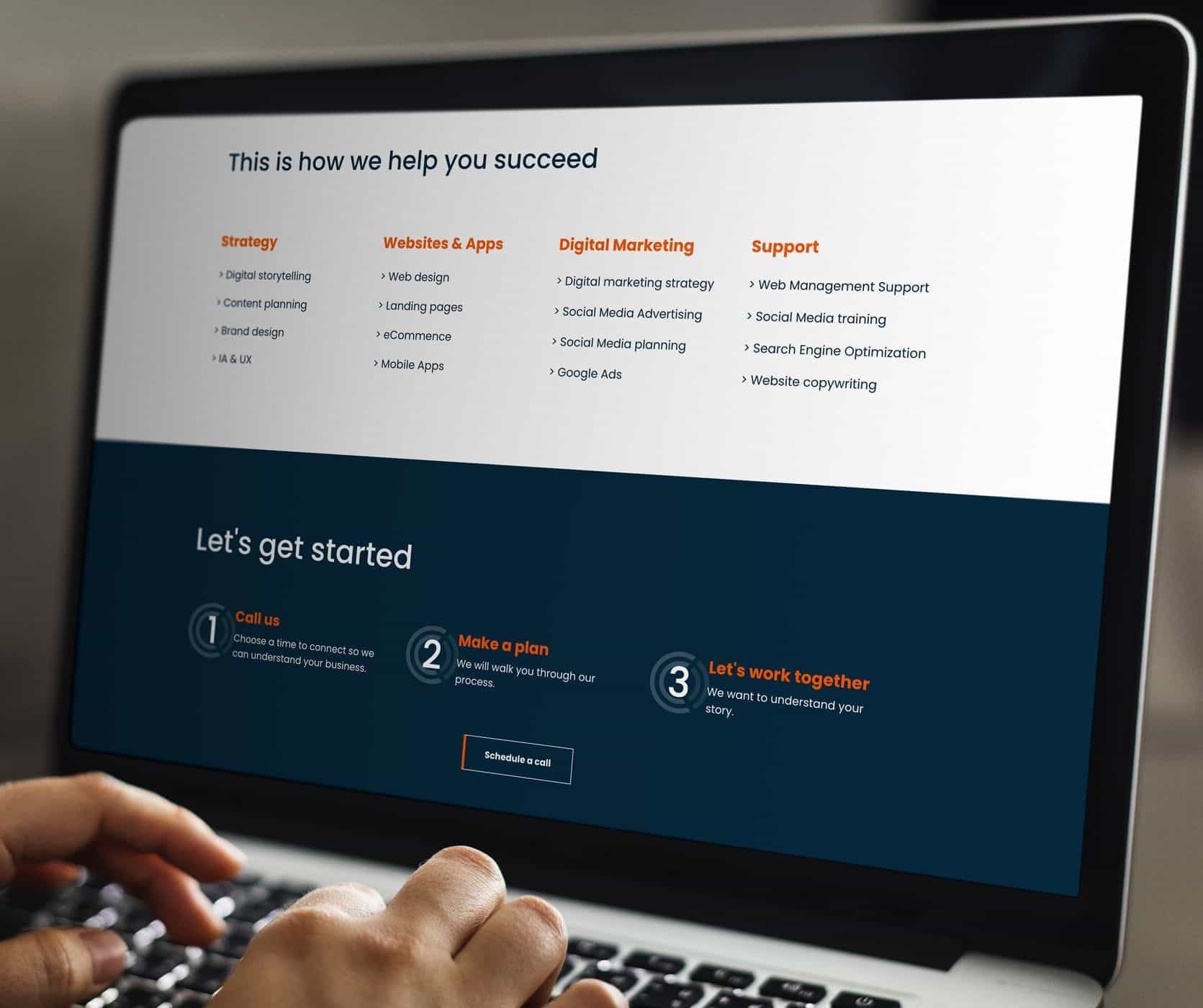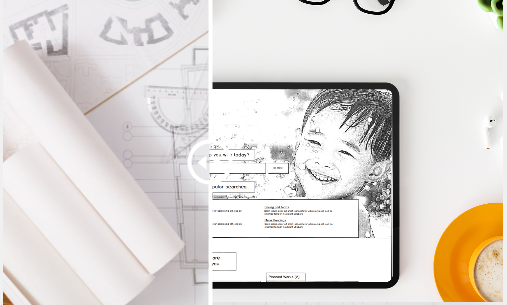5 Things to Start Your Web Project Successfully
Starting a web project is an exciting endeavour, but it can also be overwhelming if you don't have a clear plan in place.
To ensure your web project gets off to a great start, there are five essential elements to set you on the path to success.
1. Logos
The Foundation of Your Brand
Your logo is a critical part of your brand identity, and it's essential to have it polished and in the right format. Sometimes, clients provide logos that are in need a professional touch up.
Take, for instance, the case of
Civiltech. They initially provided a logo designed in Word, which lacked the finesse they desired. To rectify this, they entrusted the task of polishing and converting the logo into various formats to ensure flexibility during our design process. Your logo is often the first thing visitors see, so investing in its quality is a wise move.
Tip: it’s important to have your logo in various formats, for example stacked and vertical, as it gives the web designer more flexibility when designing your navigation banner.
Original

Polished version with various options.
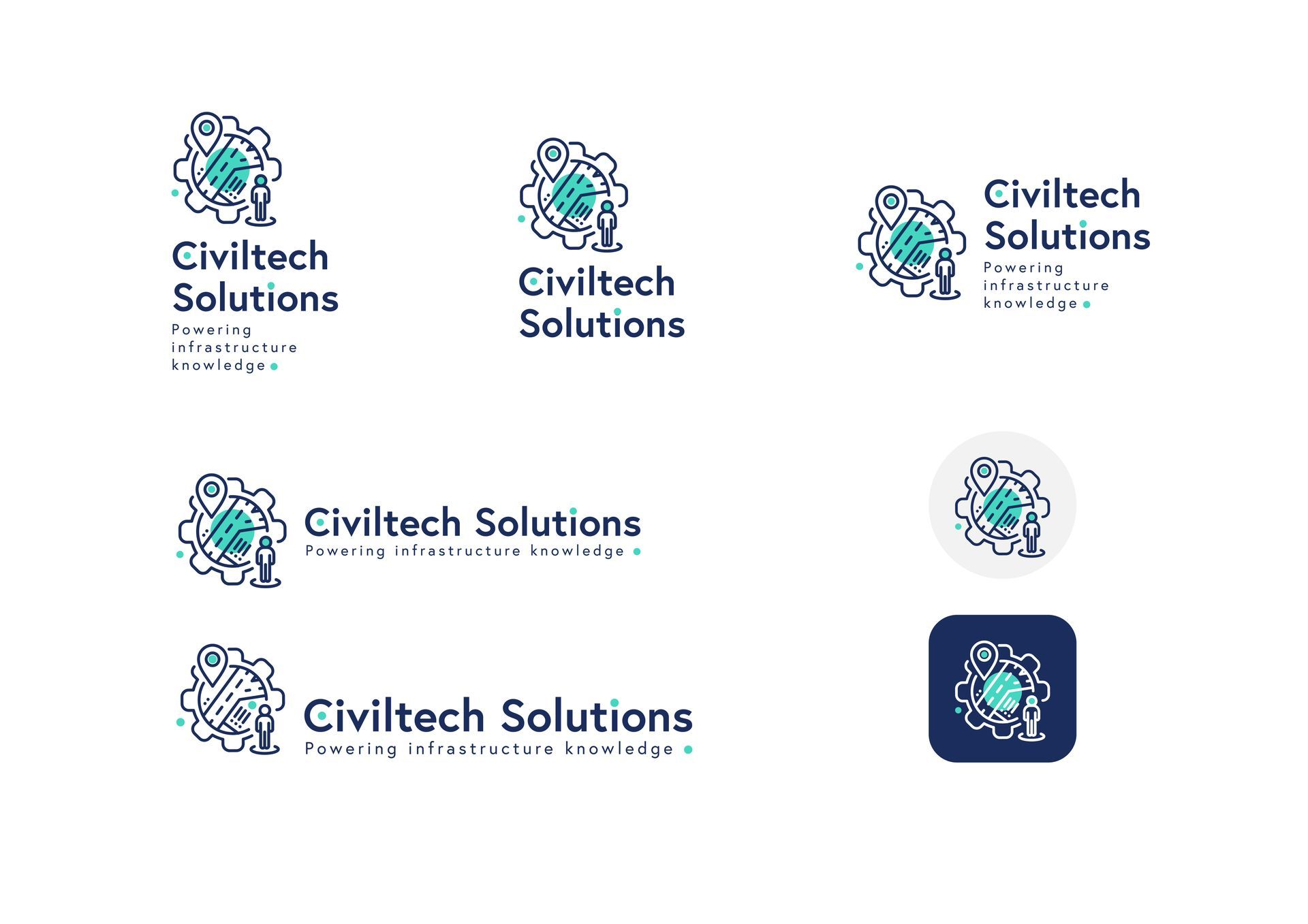
2. Crafting Key Messages
Connecting with Your Audience
Your website's key messages are the gateway to engaging your audience effectively. When thinking about your key messages, consider your target audience and what problems your product or service can solve for them.
Let's look at
MH Training as an example. Instead of simply stating that they offer training for Mental Health First Aid, we created an emotive hook: "We are encouraged to ask our colleagues and employees, 'Are you okay?' But what do you do next?" This resonates with users on a personal level, connecting with the problem they face and highlighting how MH Training can provide a solution through their workshops.
Tip: ask yourself, what problem does your audience have and how can we solve it. That’s your hook.

3. Quality Graphics and Images
Elevating Your Brand
Visual elements play a pivotal role in web design. The Policy Room's website is a great example of using high-quality graphics and images effectively. Salli invested in a professional photoshoot creating a personalised and engaging experience for visitors.
She also had her graphic designer daughter develop custom graphics that we were able to incorporate as design elements, contributing to a cohesive brand identity. Consider these visuals as brand elements that help your website stand out and leave a lasting impression.
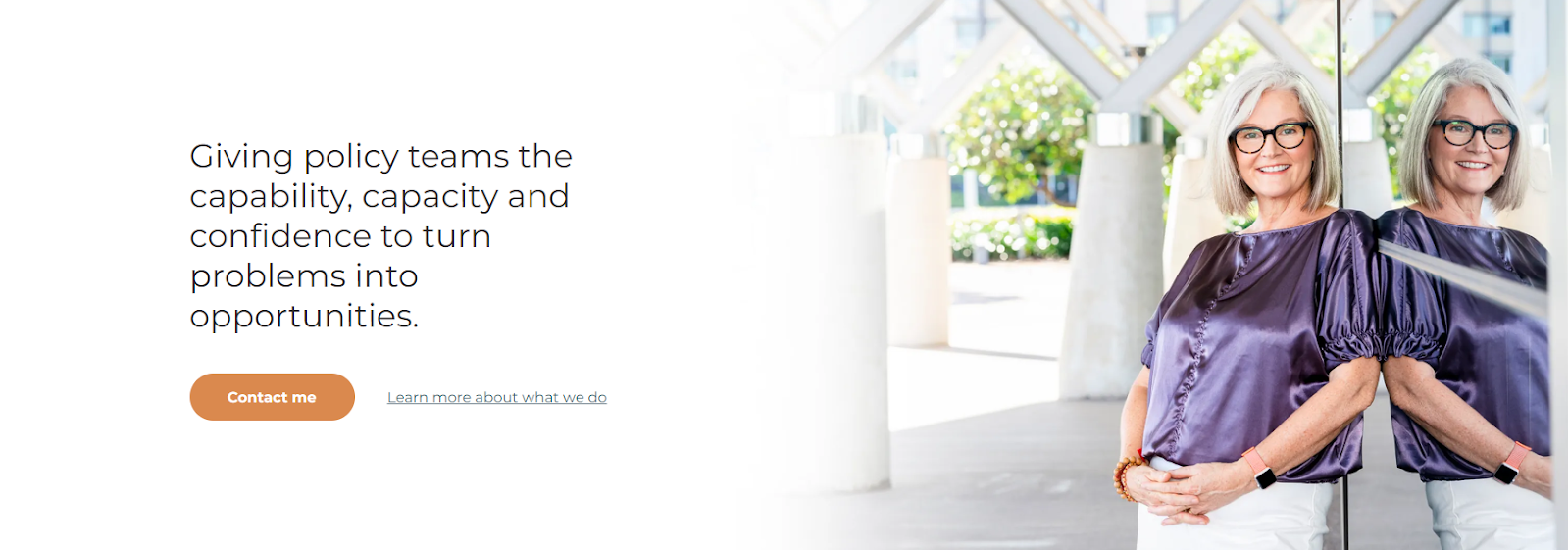
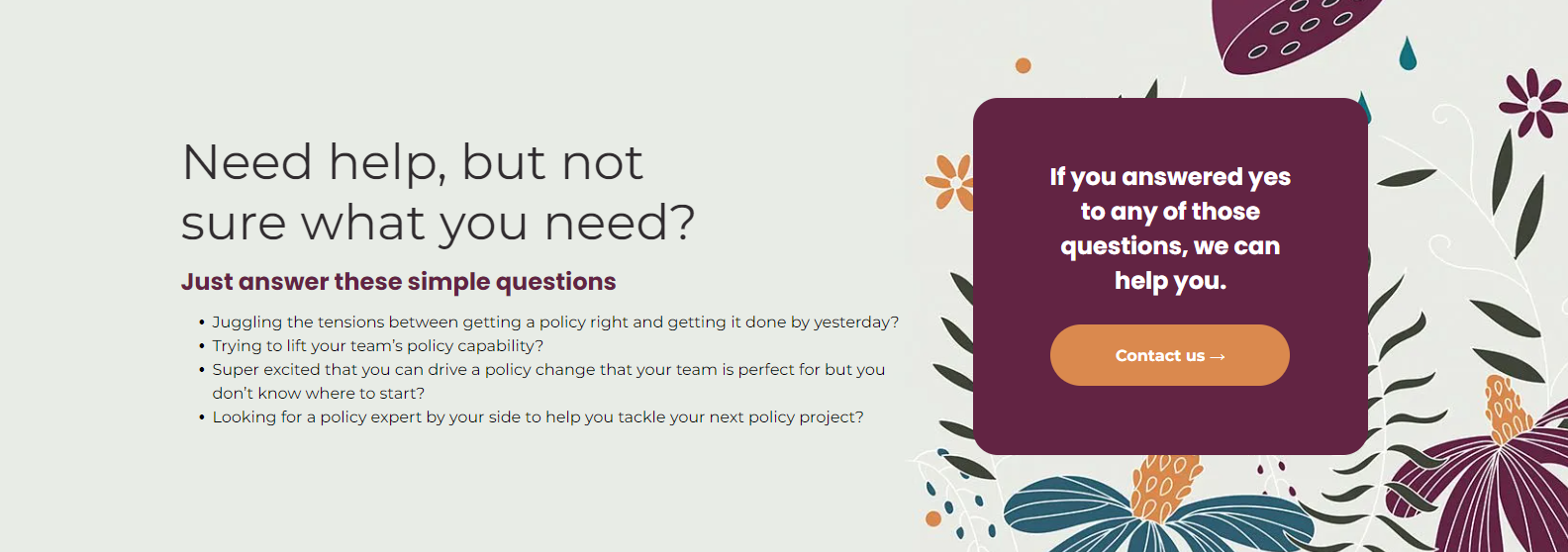
Tip: the graphics can then be converted into social templates

4. Content
The Heart of Your Website
Quality content is the foundation of your website's success. The question here is not about the detail of the content but about who will create it. If you're unsure about your writing abilities or lack the time, consider our copywriting services. Our professional writers (not AI generators) can craft content from scratch, refine your bullet points, or even transform voice recordings into engaging written material.
Consider the example of the
Remote Pools Project,
a modest philanthropic organization with a distinctive approach to enticing individuals to join their cause by serving in remote communities. Crafting the perfect language was essential to effectively convey the opportunity and draw in suitable candidates. Our team of content writers conducted in-depth interviews with the client and subsequently formulated the core messages and page content.

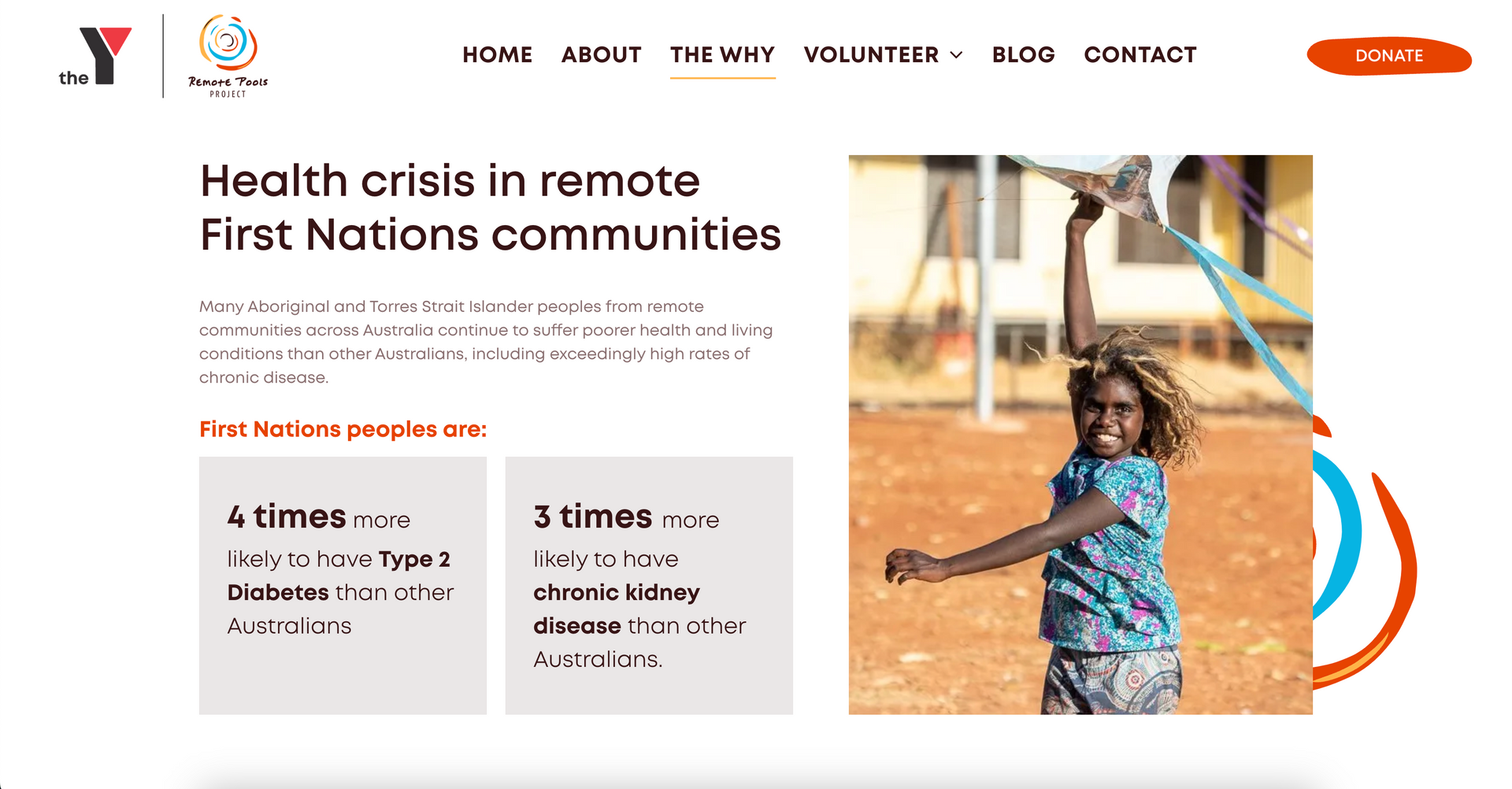
5. Call to Actions (CTA)
Guiding User Actions
Lastly, your website should guide users towards taking specific actions. Whether you offer products or services, it's essential to make it clear what visitors can do next. If you're a service-oriented business, like consulting, provide links for users to book a consultation.
A well-placed CTA can significantly increase user engagement and conversions.





Contact us
+61 8 8941 6888
hello@captovate.com.au
support@captovate.com.au
Captovate acknowledges the traditional owners and custodians of country throughout Australia and acknowledges their continuing connection to land, waters and community. We pay our respects to the people, the cultures and the elders past, present and emerging.
Offices
Darwin
Level 1, 22 Cavenagh Street
Darwin NT 0800
Australia
Adelaide
Level 6, 25 Franklin Street
Adelaide SA 5000
Australia
Canberra
Level 1, 37 Geils Court
Deakin ACT 2600
Australia




